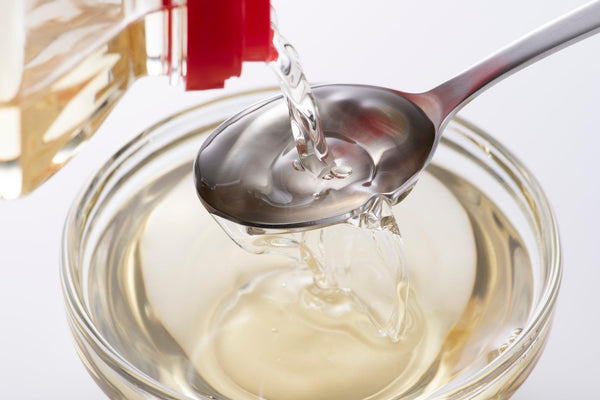
Jump to:
Although “Sake” in Japanese is a general, all-encompassing word for alcohol, when used in English, it normally refers to rice wine, or Nihonshu (you can find more information on Nihonshu, or Japanese sake, here). You may not be aware, however, that there is a type of sake that is not for drinking purposes at all and serves more as a condiment for use in cooking.
In this blog post, we will look at what cooking sake, or ryourishu is and how it differs from Nihonshu, considering its taste, its ingredients, and its production process. We will also look at how it is used, comparing it with similar condiments, examine whether there are any substitutes you can use, and round off by looking at where you can buy cooking sake.
Differences Between Nihonshu And Cooking Sake?

The biggest difference between Nihonshu and cooking sake is whether it is drinkable or not.
Although both Nihonshu and cooking sake are alcoholic, they are completely different in terms of their purpose. Nihonshu is meant to be enjoyed as an alcoholic beverage. It is made from ingredients such as rice, Koji, and water, which are fermented and strained. The resulting liquid is then matured to give it the best possible taste for drinking.
Cooking sake, on the other hand, is a condiment, and it deliberately goes through a particular process (called Fukainshochi in Japanese) that makes it undrinkable. Cooking sake retains the acidity and bitter qualities produced during its production in order to add richness and flavor to dishes. In some cases, sweeteners, umami seasonings, and acidifiers are also added to cooking sake, with the aim of deepening the flavor and umami of dishes.
Cooking sake has an alcohol content of 13-15% but is not classified as an alcoholic beverage under the Liquor Tax Law because it is made undrinkable by the addition of salt and other ingredients during the manufacturing process. Whereas Nihonshu is subject to the liquor tax in Japan, cooking sake is classed as a food product instead and, as such, is not subject to this tax, which makes it a lot less expensive.
How Is Cooking Sake Made?

The production process for cooking sake is similar to that for Nihonshu, but as it is not intended to be drunk, there are a lot fewer restrictions. For a start, it is perfectly acceptable to use a lower grade of rice. As the rice does not need to be polished as much as for Nihonshu, more of the rice can be used, which in turn also makes it cheaper. (If you are interested in the relationship between rice polishing and grades of sake, see this article.) It can also have amino acids and sugars added. It might have alcohol added or alternatively it may be diluted to increase the volume and lower the price. In other words, there is a great deal more flexibility in terms of the production process than with Nihonshu.
Benefits Of Using Cooking Sake In Your Cooking
There are a number of benefits to using cooking sake in your cooking. Firstly, adding cooking sake to marinades and sauces helps to remove strong meat or fish odors, kills bacteria, and when applied to foods destined for the freezer, helps to prevent that “freezer smell” from developing
It also helps to soften meat by locking all of the moisture inside, making it juicy and tender. Similarly, if you need to cook meat in a hurry, you can add cooking sake to help cook the meat through more quickly.
Due to the fact that it uses more of the outer husk of the rice, there is a higher proportion of amino acids in cooking sake than in case of drinking sake, especially the higher-priced, more refined stuff, and these amino acids and glutamic acid add umami to soup stocks, sauces, and simmered and grilled dishes, and its glucose and sucrose also give them a natural sweetness. Like wine, it adds a distinctive flavoring to the dish.
Adding cooking sake also helps the other flavors of the dish sink into the ingredients, it relieves the acidity and helps to prevent food from breaking into pieces when it is cooked.
Lastly, you may be surprised to learn that it can be good for your health. As sake is a fermented product, it contains antioxidants that help the body digest food. Another benefit is that by adding umami, fats, and oils are not required to make the dish satisfying. This has obvious health benefits, in addition to weight loss.
What Dishes Use Cooking Sake?

As mentioned earlier, cooking sake is often added to sauces and marinades. A splash can also be added when sauteing vegetables, or boiling starchy vegetables, rice, or pasta.
Kyoto chefs may add a drop to finish off dashi soup stock, and it can also be added to vegetable pot-based dishes such as Nimono.
Cooking sake also acts as a mild preservative, so can be added when pickling vegetables or curing fish. In addition to its multivariate uses in Japanese cuisine, it is a useful ingredient when preparing Western dishes such as carpaccio or steak tartare.
Cooking sake can even be used as the sole ingredient when cooking certain dishes. An example of this is the Bishu Nabe or Hiroshima-style hot pot. This is a pot-based dish consisting of chicken, sunazuri (chicken stomach), pork, and vegetables seasoned simply with salt, pepper, and sake, and characterized by its lightness and the ease of enjoying the natural flavors of the ingredients. It is said to have originated as a dish invented by a master brewer in Saijo, Higashi-Hiroshima City, to satisfy his hunger between brewing sessions.
Cooking Sake Vs Mirin

Both cooking sake and Mirin come under the definition of rice wine and both are condiments that add sweetness to dishes. Both are also made from rice and Koji. So, what’s the difference?
One key difference is the alcohol content. As already noted, cooking sake has an alcohol content of around 13-15%. Mirin, on the other hand, has a much wider range. There is Hon-Mirin, which has an alcohol content of around 14%, but there are also Mirin-like seasonings, where the alcohol content is closer to 1%. This is because a different chemical reaction is triggered during the fermentation process.
Mirin, however, has a higher sugar content, which gives it a bolder sweetness than the natural, more understated sweetness that comes with cooking sake. It may also have shochu added, and the overall effect is that it is milder than cooking sake.
Check out this article if you are interested in learning more about the differences between cooking sake and Mirin.
Substitutes For Cooking Sake
So, you are just getting ready to make the evening meal, and a recipe calls for cooking sake, but you don’t have any in your place. What do you do?
Well, for a start, despite some similarities, we would not recommend substituting Mirin as the sweetness profile is completely different.
If you have some regular drinking sake (Nihonshu), then you can definitely use that and just add salt as necessary to compensate for the sodium element that would have been in the cooking sake. While effective, this is going to be more expensive than using cooking sake, so is not recommended as a long-term solution.
Where Can I Buy Cooking Sake?
You can buy cooking sake at most supermarkets and grocery stores in Japan, but the larger bottles, in particular, can be quite heavy, so if you want to avoid the effort of lugging it all the way home, why not get your cooking sake from the Japanese Taste website? You can find a collection of different cooking sake here.
One of this collection, Fukumitsuya Organic Cooking Sake, is notable in that it uses premium sake rice and, unlike most cooking sake, can also be consumed as a beverage. Yamada Nishiki rice, an organic rice grown in Hyogo Prefecture, and considered to be the best kind of sake rice, is combined with natural spring water and aged for three years to produce a cooking sake with a golden color, a mellow taste, and full-bodied flavor. Extremely versatile, it can be used when cooking Western and Chinese cuisine as well as traditional Japanese dishes. Click here to learn more.
Japan’s Non-Drinkable But Extremely Useful Type Of Sake

Although not as well known outside of Japan as the drinkable Nihonshu variety of sake, cooking sake is a must-have item for your pantry. Deliberately made non-drinkable to avoid the burdensome Liquor Tax law and keep it affordable, it adds a characteristic sweetness and umami to dishes, and compliments Dashi broth, as well as pot-based dishes like Nimono. Using it offers a number of benefits, such as removing harsh odors from food, helping to cook food through more thoroughly, and as a preservative when pickling vegetables, so it is definitely a string that you want to add to your bow.
Have you tried using cooking sake yet? If so, what is your favorite way of using it? Let us know in the comments.


0 comments